Setting Up For Podcasting or Livestreaming
The Internet has changed how we handle information in many ways, but perhaps the most exciting is how anyone can communicate their ideas with the world using only a few simple tools and a data connection. One by one, old-school media formats have been supplemented (or replaced) by newer and more widely accessible ones – book publishers with print-on-demand services, newspapers and magazines with websites, and broadcast media with streaming media.
Two of the most popular modern platforms for distributing new content are podcasts and livestreams. In this article, we’ll discuss what they are, how they differ, and what you’ll need to get you into the game quickly and with good-sounding results.
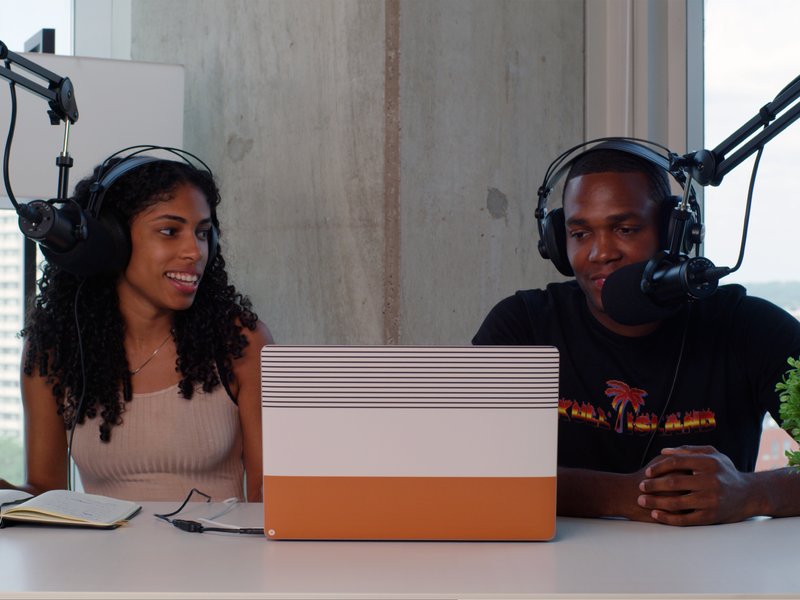
Podcasts: talk radio for the modern era
At the turn of the millennium, the infant World Wide Web added a way for a user to tell their browser or other Internet software, “This is a set of websites I’m interested in… keep an eye on them and let me know if any of them has published something new, so I can look at it.” This new protocol, RSS (for Really Simple Syndication), suddenly made it possible to subscribe to web sites or other information sources exactly as one might subscribe to a magazine or book club.
Not long after that came the podcast – a recorded audio program that could be posted on a website and subscribed to, so listeners could download or access it at their leisure. Believe it or not, even though the word is obviously a mix of the words “iPod” and “broadcast”, it was coined before Apple had added podcast support to iPods or iTunes!
Podcasts can be shared all over the Internet easily. You can listen to them online, download them to your phone or tablet, and once you’ve listened to them, you can mark them as read or delete them. In recent years, podcasts have skyrocketed in popularity, and everyone with something to talk about on a regular basis is getting into the act. If you have a subject that you can discuss regularly, from modern music to current affairs to cooking or sports, a podcast lets you capture and share your thoughts with a devoted audience, practically free of charge.
Livestreams: public-access TV goes viral
Livestreams are audio/video programs that are presented on platforms that support them, such as Twitch, Facebook, and YouTube. Viewers can subscribe to channels to be alerted when a new livestream will begin. Nearly all livestreams are recorded as they happen, so they can be played back later for viewers who missed them or want to watch them again.
A livestreaming setup can be anything from a single smartphone to a dedicated home video studio, with varying degrees of complexity and sophistication. While the video aspect makes livestreaming a bit more complex than podcasting, you can still broadcast everything from unboxing the latest cool product to discussing recent movies to interviewing worthwhile guests, again for little or no money.
Tools of the trade: in the studio
Because they’re recorded ahead of time, podcasts require little more than a microphone and a way to record and edit audio. A wide variety of free or inexpensive recording/editing software is available for Mac, Windows, and iOS; the most popular free options are Apple GarageBand (Mac, iOS) and Audacity (Mac, Windows).
Livestreaming software combines video from one or more cameras with a designated audio source; the latter could be a full-featured mixer with multiple mics attached, but is often just a single microphone. Either way, a high-quality USB mic will often be all the audio hardware you need; to choose the best one, consider the kind of podcast or livestream you’ll be doing and select a mic that’s optimized for that.
Many podcasts and livestreams involve no more than a single person speaking, or perhaps interacting with someone calling in remotely. As with any voiceover work, the ‘right’ mic is the one that sounds best on the podcaster’s voice, with pretty much all other considerations being less important. With that in mind, the solo podcaster/livestreamer might consider Samson’s C01U Pro, Q2U Recording and Podcasting Pack, or Q9U XLR/USB Broadcast Dynamic Microphone.
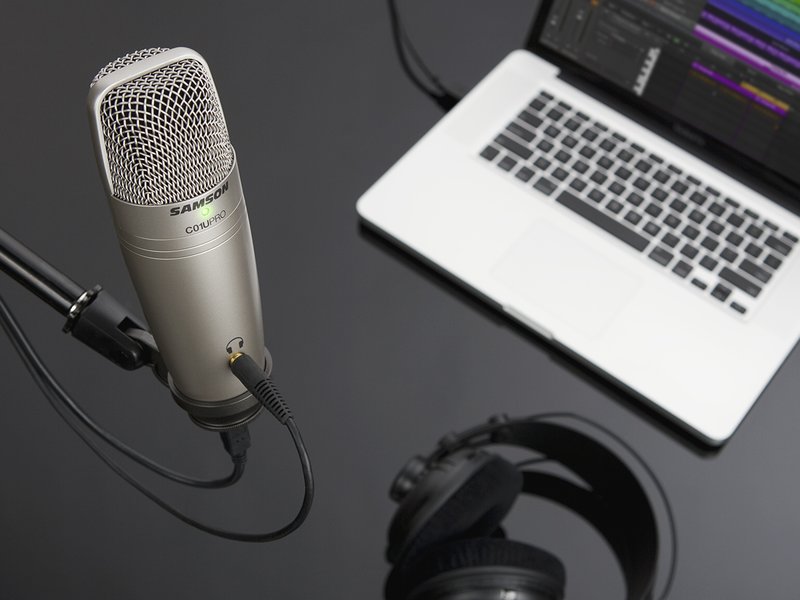
The C01U was the world’s first USB condenser mic, combining a high-quality studio mic sound with plug-and-play ease of use with any computer; the C01U Pro continues this tradition of excellence by adding a zero-latency direct monitor connection for headphones. (See my article to learn more about direct monitoring.)
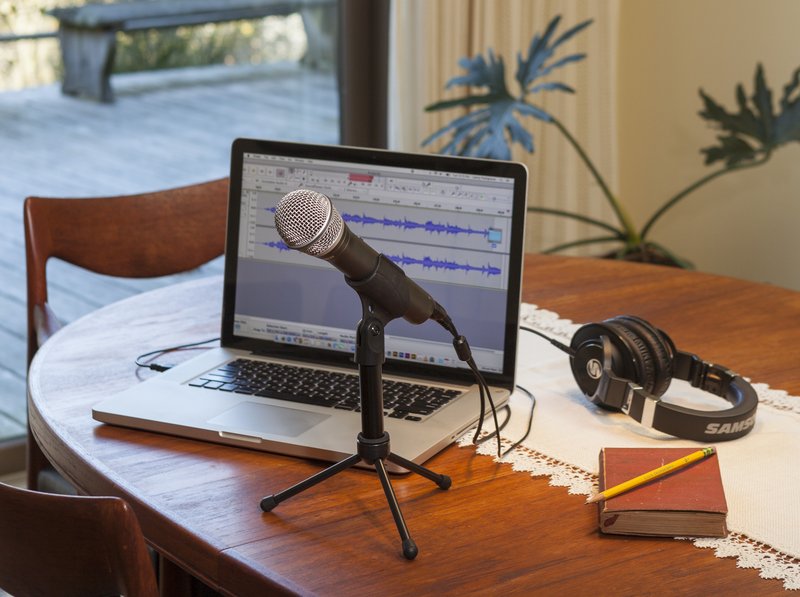
For users who want a solution that can work live on a stage in a club as well as in a studio, the Q2U dynamic microphone has a warm and punchy sound that gives power and presence to vocals and instruments. It has a built-in mute switch and direct monitoring headphone output, and functions both as a USB mic and conventional XLR dynamic mic. The Q2U Recording and Podcasting Pack adds a folding desktop stand, windscreen, and both XLR and USB cables to get you started.
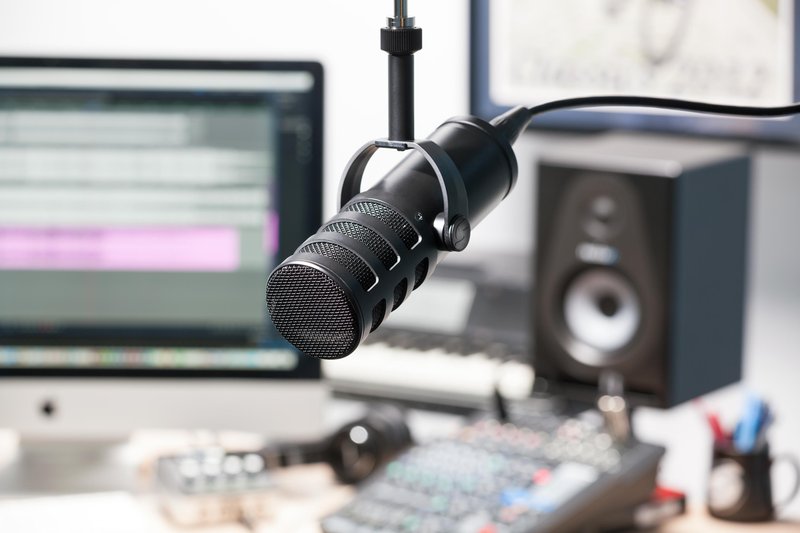
The Q9U is a podcaster-friendly dynamic microphone that harks back to the broadcast mics of the radio era, with a strong proximity effect that adds power and punch to any voice. With its internal shock mount and internal dual-layer windscreen, handling noise and plosives are kept to a minimum, and it’s easy to tailor its sound to your voice with its built-in mid-presence boost and low-cut filter switches. It has an XLR output for use as a standard broadcast mic, but when hooked up to a computer via USB, it adds an on-mic mute function, zero-latency monitoring, and A/D conversion at up to 24-bit/96 kHz sound quality. Just add a mic boom like Samson’s MBA28, MBA38, or MBA48, or a desk stand like the Samson MD5, and you’re ready to wow the world with your radio-ready voice.
Tools of the trade: out in the world
Some podcasts and livestreams are based around on-location interviews, where the host chats in person with one or more other people. These podcasts benefit from a mic with multiple polar patterns – cardioid to focus on one voice, omnidirectional to pick up several people around the room, or figure-8 to pick up the interviewer and guest while rejecting surrounding sounds. Depending on the podcast’s particular needs, either the Samson G-Track Pro or Satellite will be a great choice.
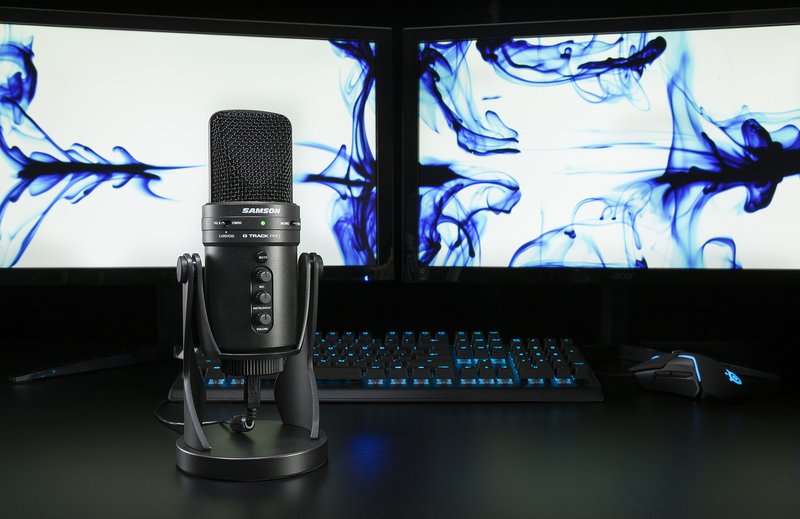
The G-Track Pro is more than just a professional-grade condenser mic with built-in desk stand. It also has a zero-latency direct monitoring output and a ¼” high-impedance input for a guitar, electric piano, or other instrument, with individual level controls for mic, instrument, and headphones right on the mic. You can even select whether the mic and instrument signals will be split for separate recording or processing, or premixed for live broadcasting.
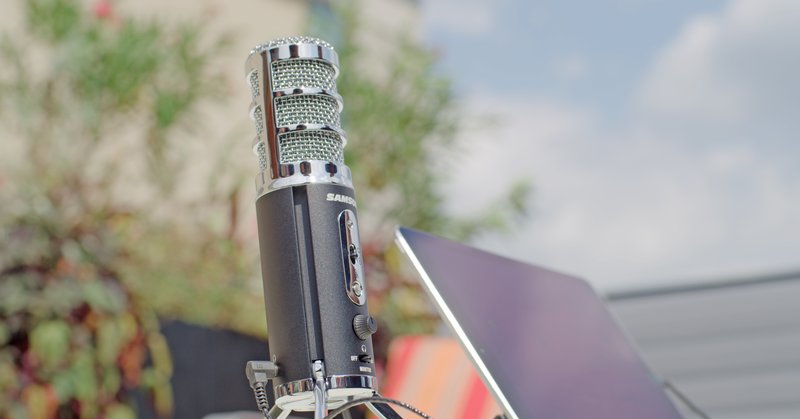
The Satellite is Samson’s next-generation portable USB mic. In addition to three polar patterns, switchable zero-latency direct monitoring, and on-mic headphone level control, it adds a silent mic mute switch to avoid thumps during recording, and support for up to 24-bit/96 kHz high-definition audio recording – all in a compact package with a built-in folding tripod. One of its big advantages with respect to competing products is the inclusion of a Lightning cable, making it an out-of-the-box solution for the rapidly growing segment of content creators that work directly with of iPhones and iPads.
Going bigger with the Samson MediaTrack
Fancier interview setups with multiple microphones and streaming content usually require a USB mixer. Samson’s MixPad series of compact analog stereo mixers are a good choice for these applications.
However, modern livestreaming often requires that the presenter mix a variety of unusual sources that traditional pro audio gear wasn’t optimized for. A livestream presenter, particularly in the educational realm, might want to mix audio from one or more mics, a webcam, a video projector, computer software or web content, or even a smartphone being used to conduct a live remote interview. What mixer could handle all of this at once?
The new Samson MediaTrack is designed for the modern streaming studio or classroom, with a variety of inputs that combine multiple media sources elegantly and compactly.
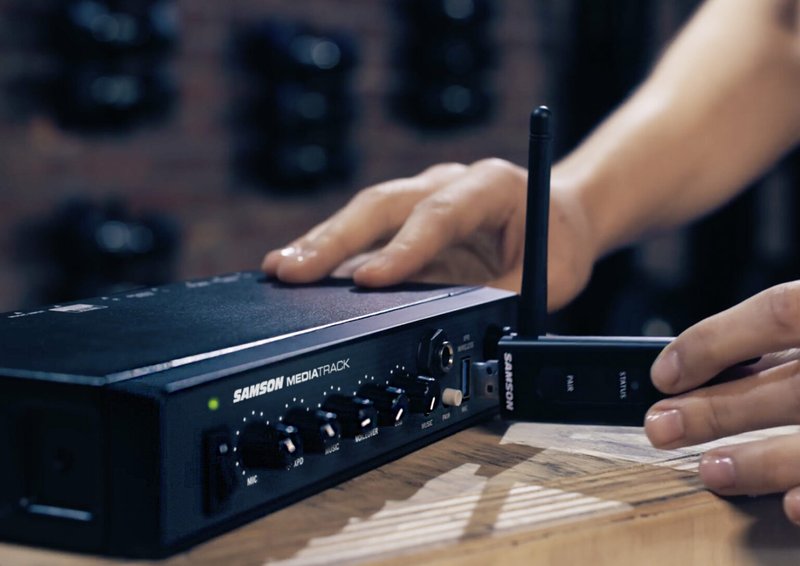
A compact half-rack mixer that can be rackmounted next to a Samson wireless microphone receiver, the MediaTrack has inputs for an external XLR microphone or balanced line-level input, a stereo Music input (on RCA, ¼”, or 3.5mm), a Samson XPD wireless microphone (with its own USB slot on the front panel), audio from your computer, and streaming Bluetooth audio from an external device. Its built-in Voiceover feature ducks the level of background audio whenever the presenter is speaking – with hold time adjustable on the rear panel – and it can output mono or stereo audio via rear panel RCA and XLR jacks.
Make your voice heard
If you have something to communicate – whether for education, engagement, or just plain fun – there’s never been a better time in human history to get out there and get heard. A few properly selected tools will get you up and broadcasting, and we can’t wait to hear what you have to say!
